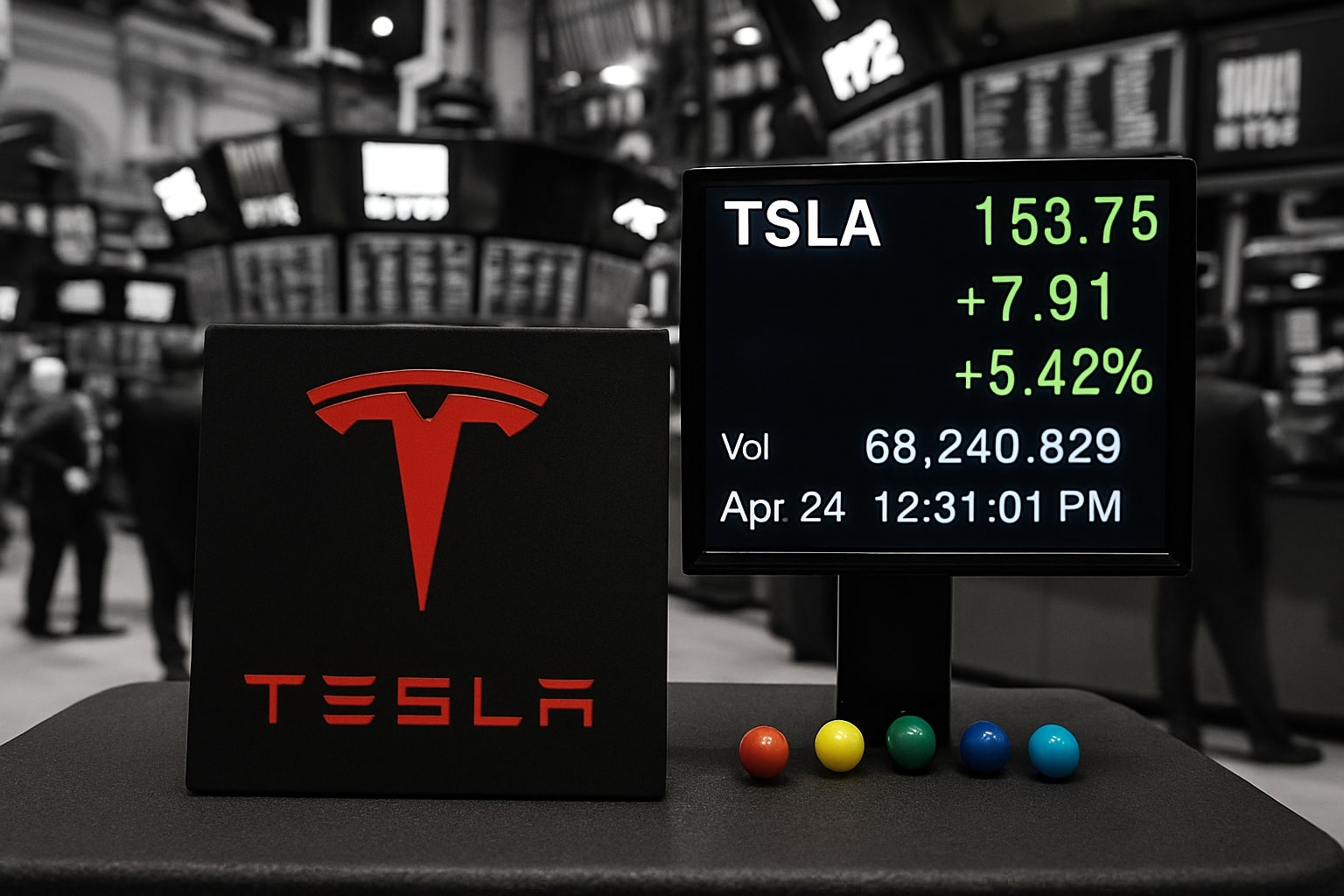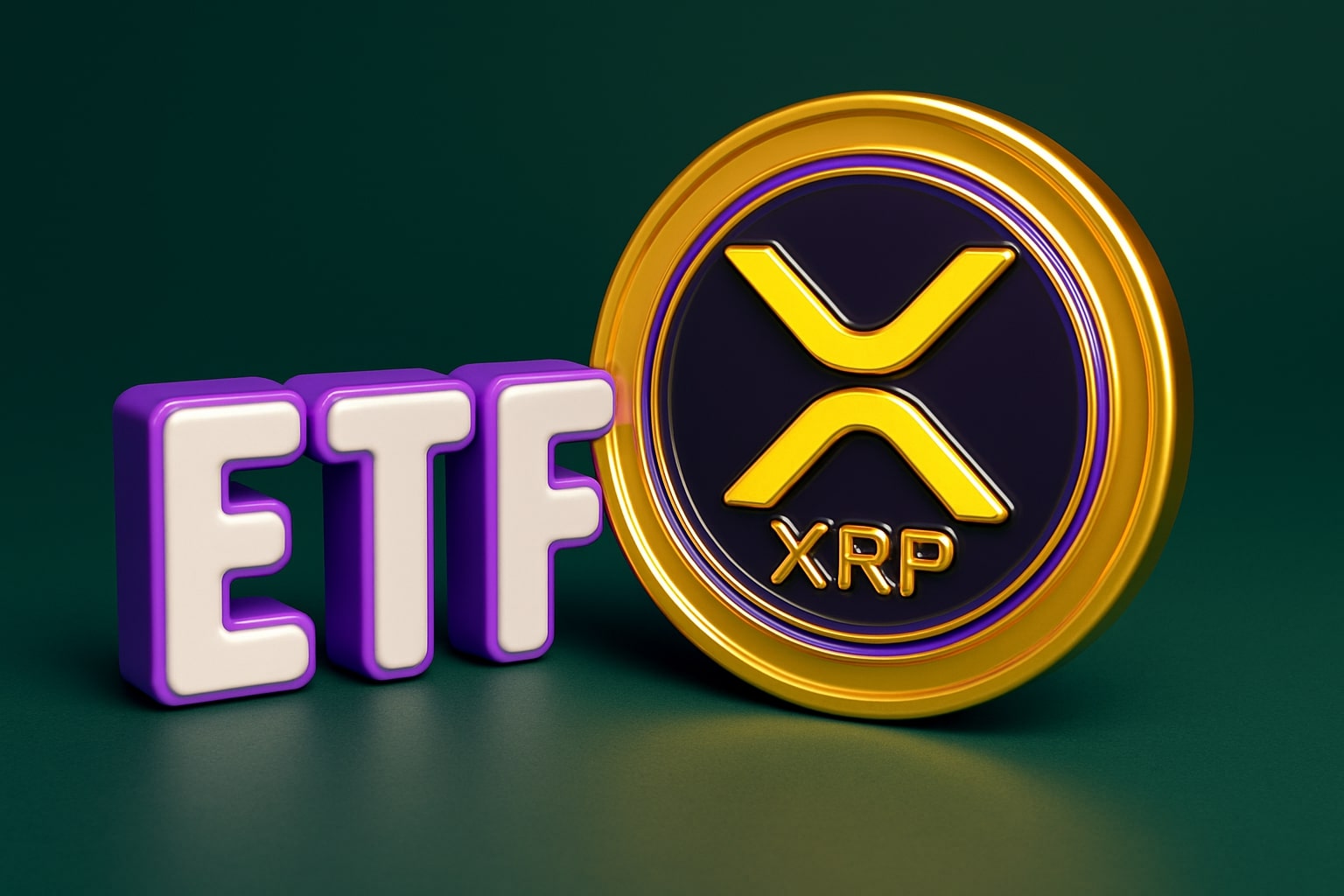
Tesla Stock Price Forecast -TSLA Hits $453.25 as October 7 Event Fuels $1.52T Valuation
Elon Musk’s teasers ignite a 5.45% rally before Tesla’s major reveal, with deliveries hitting 497,099 and margins narrowing to 17.2% as investors debate between a Roadster launch and a low-cost Model Y debut | That's TradingNEWS
Tesla (NASDAQ:TSLA) Surges 5.45% to $453.25 Ahead of October 7 Reveal — Valuation Soars Past $1.52 Trillion Amid Delivery Beat and Model Y Speculation
Stock Performance and Market Overview: NASDAQ:TSLA Extends Rally
Tesla (NASDAQ:TSLA) surged 5.45% to close at $453.25, adding over $70 billion to its market capitalization in a single session and pushing total valuation to $1.529 trillion. The rally came after a series of cryptic teaser videos posted by Tesla’s official X account hinted at a major announcement scheduled for October 7, fueling widespread speculation of either a new affordable Model Y variant or the long-awaited Roadster launch. After-hours trading saw minor consolidation at $452.71 (-0.12%), reflecting profit-taking ahead of Tuesday’s reveal. Over the past 12 months, Tesla’s stock has climbed 81.24%, vastly outperforming the S&P 500’s 17.2%, while year-to-date returns stand at +12.24%, despite delivery volatility earlier in the year.
Financial Snapshot and Valuation Metrics: Lofty Multiples, Slowing Growth
Tesla’s current financials paint a picture of slowing revenue momentum paired with extreme valuation expansion. For the trailing twelve months, Tesla reported $92.72 billion in revenue, down 11.8% year-over-year, with a net income of $5.88 billion and EPS of $1.68. Profit margin remains modest at 6.34%, while return on equity sits at 8.18%, a sharp drop from its 2021 peak above 25%. Despite these headwinds, NASDAQ:TSLA trades at a trailing P/E ratio of 259.52 and a forward P/E of 172.41, pricing Tesla at more than 200x earnings—a level few mega-cap companies maintain without extraordinary growth. The PEG ratio of 7.72 and Price/Sales ratio of 16.54 further highlight the premium investors are willing to pay for Tesla’s long-term optionality in AI, robotics, and energy storage.
Delivery Momentum and EV Tax Credit Impact: Short-Term Boost or Structural Rebound?
The company delivered 497,099 vehicles in Q3 2025, a record quarter and a clear beat over Wall Street’s 480,000 estimate. This surge was largely attributed to the expiration of the $7,500 U.S. federal EV tax credit on September 30, which pulled forward demand across the quarter. Analysts warn, however, that this spike could front-load sales and leave Q4 relatively weaker. Nevertheless, Tesla’s global deliveries jumped 7% year-over-year, marking a vital recovery after back-to-back declines in Q1 and Q2, where deliveries fell 13.5% and 13.4%, respectively. Demand also strengthened in Europe—particularly in France, Denmark, and Spain—despite intensified competition from BYD and XPeng.
Product Strategy and Upcoming Reveal: All Eyes on October 7
The upcoming October 7 Tesla event has electrified investor sentiment, with social media speculation split between a mass-market $30,000 EV and the next-generation Roadster. The teaser videos—featuring a spinning turbine and headlights through smoke—have drawn tens of millions of views on X, signaling the market’s heightened anticipation. Analysts like Matt Britzman of Hargreaves Lansdown believe the event will center on a cheaper Model Y, designed to be 20% less costly to produce and target 250,000 units annually by 2026. If priced competitively, this vehicle could expand Tesla’s addressable market by over $400 billion, countering BYD’s domination of the sub-$30,000 segment in China and Europe.
Autonomy, FSD, and Robotaxi Expansion: The High-Stakes Frontier
Tesla continues to bet heavily on autonomy as its defining differentiator. The company has logged more than 7 billion Full Self-Driving miles, dwarfing Waymo’s 22 million urban miles, giving Tesla the world’s largest autonomous driving dataset. The Austin Robotaxi pilot, launched in mid-2025, represents Tesla’s first paid deployment of FSD, potentially opening a $10 billion annualized market by 2028 if scaled successfully. Yet, regulatory constraints remain formidable: NHTSA, state-level transportation authorities, and insurance regulators continue to delay full-scale deployment. Tesla’s strategy hinges on convincing regulators that its AI-driven safety metrics outperform human drivers—a milestone still several quarters away.
AI and Robotics: Optimus and the Long-Term Transformation of Tesla
Beyond cars, Tesla’s Optimus humanoid robot initiative is emerging as a key growth pillar. Optimus 3, which Elon Musk has described as “near-final,” is expected to be unveiled by the end of 2025, with targets of 1 million units per year within five years. The integration of FSD AI frameworks into humanoid robotics could position Tesla as a central player in industrial automation, creating a new trillion-dollar market parallel to its EV business. Analysts increasingly view Tesla less as an automaker and more as a vertically integrated AI-energy-robotics conglomerate, a narrative that supports its extraordinary valuation.
Energy Storage and Megapack Business: Quietly Powering Growth
While Tesla’s automotive division faces cyclical volatility, the energy storage business remains a hidden engine of expansion. Megapack deployments doubled year-over-year in 2024, contributing an estimated $8–10 billion in value by 2028, based on current installation rates. The company’s 36.78 billion in cash reserves and low debt-to-equity ratio of 16.82% provide ample capacity to scale its energy operations, even as the EV segment’s margins compress. Tesla’s gross margin has declined from 23% to 17.2%, underscoring the strategic importance of diversifying into higher-margin verticals such as energy and software licensing.
Valuation Compression Risks: Between Innovation and Overextension
Despite its visionary outlook, Tesla’s valuation remains highly sensitive to execution risk. At 259x trailing earnings, any delay in autonomy or slowdown in delivery growth could trigger a rerating. Applying a normalized P/E multiple of 20x to Bloomberg’s 2028 earnings projection of $5.5 billion implies a price between $160 and $240, a base case shared by value-focused investors. On the other hand, if the robotaxi and Optimus initiatives materialize, Tesla’s fair value could range between $500 and $600 per share, consistent with bullish analyst forecasts from Wedbush ($600 target) and Piper Sandler ($500 target).
Analyst Consensus: Divided Between Vision and Valuation
As of early October 2025, the average analyst target for NASDAQ:TSLA stands at $351.34, with a high forecast of $600 and a low of $120. Roughly 34 analysts cover the stock, split across 11 “Buy,” 16 “Hold,” and 7 “Sell” ratings. Morgan Stanley, Baird, and Cantor Fitzgerald maintain “Overweight” positions, citing cross-platform synergy between Tesla’s AI, robotics, and energy divisions. Meanwhile, Jefferies and UBS remain cautious, reiterating neutral ratings and warning of inflated multiples amid decelerating revenue growth.
Competitive Landscape: BYD’s Cost Edge and Global Headwinds
China’s BYD Company Limited (BYDDY) continues to pressure Tesla globally, with 3 million vehicles produced annually versus Tesla’s 1.6 million, at an average cost $6,000 lower per car. BYD’s sub-$10,000 models have captured massive market share in Asia and Europe, forcing Tesla to focus on manufacturing efficiency and localization. The upcoming Texas Gigafactory expansion aims to reduce average vehicle cost to $36,000, narrowing the gap with BYD’s $30,000 average. Despite these challenges, Tesla’s brand equity and supercharger network remain its strongest competitive moats.
Insider Activity and Institutional Positioning: Mixed Sentiment
Insider data from TradingNews.com’s Tesla profile shows modest net selling activity across the past six months, mainly tied to compensation plans and tax-related disposals. Institutional ownership stands at 49.4%, with major holders including Vanguard, BlackRock, and State Street. Short interest is low at 2.96% of float, reflecting limited bearish conviction despite valuation concerns. The company’s float of 2.72 billion shares and average 90.3 million daily volume ensure high liquidity, making Tesla one of the most actively traded stocks on the NasdaqGS.
Technical Structure and Price Outlook: Momentum Points to $488 Resistance
Tesla’s technical indicators remain broadly bullish. The stock trades 25% above its 50-day moving average of $363.66 and 35% above the 200-day average of $335.19, confirming sustained uptrend momentum. RSI readings near 65 suggest bullish continuation without immediate overbought risk. Key resistance levels stand at $488.54 (52-week high) and $500, while immediate support lies at $436 and $420. A breakout above $488 could trigger algorithmic buying and extend the rally toward $520–$550, particularly if the October 7 event exceeds expectations.
Read More
-
MSTY ETF Collapses to $6.94 as Microstrategy (MSTR) Stock $543-to-$172 Crash and Bitcoin’s $85K Slide Trigger Yield Trap
25.11.2025 · TradingNEWS ArchiveStocks
-
XRP ETFs Record $164M Inflows as XRPI and XRPR Hold Firm at $12.86 and $18.07 with XRP Rebounding to $2.19
25.11.2025 · TradingNEWS ArchiveCrypto
-
Natural Gas Price (NG=F) Drops to $4.39 as Record Output and Global LNG Flood Weigh on Futures
25.11.2025 · TradingNEWS ArchiveCommodities
-
USD/JPY Price Forecast - Dollar to Yen Drops to 156.05 as Weak U.S. Data Shake Dollar Strength
25.11.2025 · TradingNEWS ArchiveForex
Macro Context and Fed Sensitivity: Rate Cuts Could Reignite Tech Momentum
Macro conditions remain crucial to Tesla’s performance. With the Federal Reserve signaling potential rate cuts in early 2026, high-growth equities like Tesla are likely to benefit from lower discount rates on future cash flows. However, persistent inflation and rising input costs—particularly lithium and nickel—could compress margins further if supply chain normalization stalls. Tesla’s exposure to China’s economic fluctuations and U.S. political volatility under Elon Musk’s proximity to the Trump administration add secondary risks that investors continue to price in cautiously.
Final Verdict: HOLD — Visionary Long-Term Potential, Short-Term Overvaluation
Tesla’s valuation reflects extraordinary optimism about its role in autonomy, robotics, and energy transformation. Yet near-term fundamentals—declining margins, decelerating growth, and regulatory uncertainty—temper its risk-reward balance. While long-term investors with multi-year horizons may view the upcoming October 7 launch as a catalyst for continued innovation, the current 259x earnings multiple limits upside in the short term.
Verdict: HOLD — Tesla remains a long-duration innovation play trading far ahead of fundamentals. Watch for confirmation from Tuesday’s announcement before initiating new exposure.


















